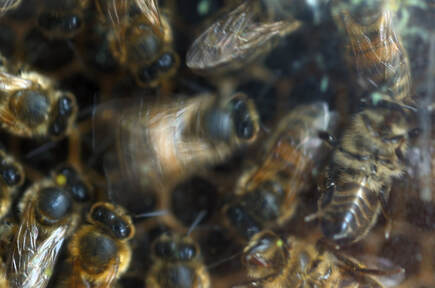 Fig 1: A returning honey bee forager performs a waggle dance. Photo by Roger Schürch
Fig 1: A returning honey bee forager performs a waggle dance. Photo by Roger Schürch
The ongoing pollinator crisis exemplifies how public interest in scientific issues can be a mixed blessing, simultaneously raising awareness of important issues while also generating rallying cries for untested solutions. For example, lack of forage is considered a factor contributing to bee declines. This stressor can act directly, where hungry bees are unable to meet their nutritional needs, or indirectly, where the resulting nutritional stress reduces the bees’ ability to cope with other stressors, such as diseases and pesticides. Media coverage has been wide, and as a consequence, everyone wants to feed hungry bees.
Our methodology uses honey bee waggle dances (Fig 1), where successfully returning foragers communicate to nestmates the vector (distance + direction) from the hive to the resource, usually nectar or pollen. These dances are visible to the eye and can be decoded, analyzed, and mapped to determine where bees are and are not foraging. Only with such data may we implement a best management strategy for improving food availability to benefit overall pollinator health in a meaningful, targeted way.
Our methodology uses honey bee waggle dances (Fig 1), where successfully returning foragers communicate to nestmates the vector (distance + direction) from the hive to the resource, usually nectar or pollen. These dances are visible to the eye and can be decoded, analyzed, and mapped to determine where bees are and are not foraging. Only with such data may we implement a best management strategy for improving food availability to benefit overall pollinator health in a meaningful, targeted way.
Current projects
1. Bioindicators for a sustainable future: dancing honey bees communicate habitats’ ability to feed pollinators
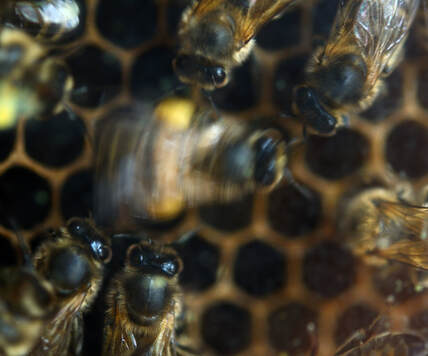 Fig 2: A returning pollen forager performs a waggle dance. Photo by Roger Schürch
Fig 2: A returning pollen forager performs a waggle dance. Photo by Roger Schürch
Providing flowers indiscriminately is a common practice to help hungry bees because current methods of surveying, cataloging, and comparing floral abundance at a landscape-scale is intensely time-consuming. Additionally, nutritional stress is often studied either in honey bees (Apis mellifera spp.) or non-honey bees, creating a dichotomy that limits the usefulness of resulting recommendations. For example, we do not know how Apis forage relates to habitat quality for other bee pollinators.
Thus, there is a critical need to develop new methods to survey Apis forage on a landscape scale and to determine if landscapes preferred by honey bees are additionally preferred by non-Apis bees. Without these data, it is not possible to implement a best management strategy for improving availability of nutritious forage that would be beneficial to overall pollinator health in a meaningful, targeted way.
Our short-term goal is to use honey bees in three distinct environments in VA to generate biologically-relevant data on forage availability primarily, but also pesticide exposure. We will use methods that we piloted with honey bee waggle dances (Fig 2), a form of communication where successful foragers indicate to nestmates the vector to food. Waggle dances are visible to the eye and can be decoded and mapped. Thus, we can determine both when and where bees are collecting food in a landscape. Importantly, we will then conduct experiments to determine if our results are pertinent to a range of pollinating bees. Specifically, we hypothesize that honey bee data on forage availability will positively correlate with diversity, abundance, and survival of wild and bumble bee colonies.
We have two long-term goals. First, we will contribute to best management strategies to improve pollinator nutrition by generating data on when and where supplemental forage is most needed. Second, we will determine if honey bees can act as bioindicators to inform on a landscape’s ability to feed pollinators.
This project is a foundational part of a larger, multi-year project (2018 - 2024) in The Couvillon Lab and is funded by a grant from The Foundation for Food and Agriculture Research (FFAR). This research was part of the M.S. degrees of Mary Silliman and Taylor Steele and the Ph.D. of Brad Ohlinger.
Thus, there is a critical need to develop new methods to survey Apis forage on a landscape scale and to determine if landscapes preferred by honey bees are additionally preferred by non-Apis bees. Without these data, it is not possible to implement a best management strategy for improving availability of nutritious forage that would be beneficial to overall pollinator health in a meaningful, targeted way.
Our short-term goal is to use honey bees in three distinct environments in VA to generate biologically-relevant data on forage availability primarily, but also pesticide exposure. We will use methods that we piloted with honey bee waggle dances (Fig 2), a form of communication where successful foragers indicate to nestmates the vector to food. Waggle dances are visible to the eye and can be decoded and mapped. Thus, we can determine both when and where bees are collecting food in a landscape. Importantly, we will then conduct experiments to determine if our results are pertinent to a range of pollinating bees. Specifically, we hypothesize that honey bee data on forage availability will positively correlate with diversity, abundance, and survival of wild and bumble bee colonies.
We have two long-term goals. First, we will contribute to best management strategies to improve pollinator nutrition by generating data on when and where supplemental forage is most needed. Second, we will determine if honey bees can act as bioindicators to inform on a landscape’s ability to feed pollinators.
This project is a foundational part of a larger, multi-year project (2018 - 2024) in The Couvillon Lab and is funded by a grant from The Foundation for Food and Agriculture Research (FFAR). This research was part of the M.S. degrees of Mary Silliman and Taylor Steele and the Ph.D. of Brad Ohlinger.
2. Perfect Planting for Pollinators: Evidence-based Recommendations for Urban Pollinator Gardens
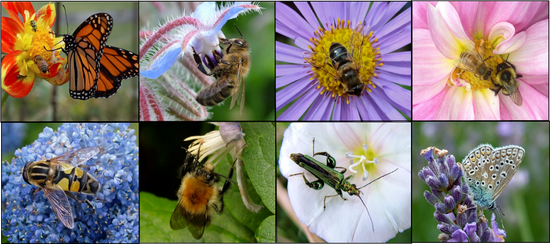 Fig 3: Pollinators visit plants that provide the nectar and pollen that is their food. However, which plants are best to use in our pollinator garden? Photos by C. Laub, F. Ratnieks, and M. Couvillon
Fig 3: Pollinators visit plants that provide the nectar and pollen that is their food. However, which plants are best to use in our pollinator garden? Photos by C. Laub, F. Ratnieks, and M. Couvillon
People want to help feed bees, and one popular activity is to establish a pollinator garden, where ornamentals (Fig 3) are planted with the express purpose of feeding pollinators. However, we do not know what plants are best to recommend. For example, there exists several published lists of plants that are supposedly good for pollinators, but these lists often do not reference peer-reviewed research, making it impossible to evaluate the data to make informed decisions. From experience, we know that several plants that are frequently found on such lists are not actually good for pollinators. Lastly, recommendations usually contain a mixture of commercially available ornamentals with more wild type mixes raised from seed, the establishment and maintenance of which is labor- and skill-intensive, rendering that method less useful to the citizen user. Thus there is a critical need to run a choice experiment to determine which garden plants are most effective at attracting the most number of individual visitors, the most diverse group of species, and the effect of native versus non-native status of plant on the type of pollinator visitor.
This project was part of the M.S. of Micki Palmersheim and was funded by a donation to The Couvillon Lab from Kaeser Compressors, Inc.
This project was part of the M.S. of Micki Palmersheim and was funded by a donation to The Couvillon Lab from Kaeser Compressors, Inc.
3. Does the productivity and survival of Alfalfa Leafcutting bees correlate with honey bee hot and cold foraging areas, as communicated by the waggle dance?
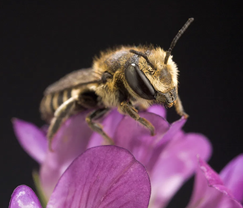 Fig 4: An Alfalfa bee, Megachile rotundata. Photo by Dr. Theresa Pitts-Singer.
Fig 4: An Alfalfa bee, Megachile rotundata. Photo by Dr. Theresa Pitts-Singer.
In 2018-2019, we video recorded the waggle dances in 3 observation hives at 4x / week, weekly, from April – October. Concurrently, we sampled the forager-returned pollen to provide source plant identification. From the videos to extract the location of where the bees foraged, which generated a unique and powerful dataset (dance + pollen) on where, when, and upon what honey bees are feeding themselves within given landscapes and across time. However, are these data relevant to other bees?
We are investigating how well the information from the dancing honey bees relates to the productivity and survival of another managed bee, the Alfalfa Leafcutting bee (Megachile rotundata, Figure 4). We hypothesize that the areas indicated as good by honey bees for resource availability will correlated with increased productivity and survival for the Alfalfa bees. This research is part of the Ph.D. of Chad Campbell.
We are investigating how well the information from the dancing honey bees relates to the productivity and survival of another managed bee, the Alfalfa Leafcutting bee (Megachile rotundata, Figure 4). We hypothesize that the areas indicated as good by honey bees for resource availability will correlated with increased productivity and survival for the Alfalfa bees. This research is part of the Ph.D. of Chad Campbell.
4. What are the causes and consequences of honey bee waggle dance (mis)communication?
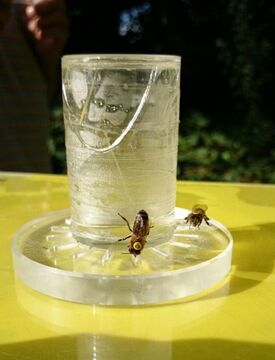 Fig 5: Marked honey bee foragers collect sugar water at a feeder as part of a calibration experiment.
Fig 5: Marked honey bee foragers collect sugar water at a feeder as part of a calibration experiment.
Honey bees are highly social insects that work together to find food for their colony through the remarkable recruitment behavior of the waggle dance. In this communication, a bee can communicate the distance and direction from the hive to the food. When her sister finds the food source, which can be an artificial feeder (Fig 5), based on this information, we consider that a successful recruitment event. Interestingly, though, only some of the bees who follow a dance will make it to the right place (about 25%). The reason why is not totally understood.
We recently showed that there is considerable individual bee differences in the way that distance in particular is communicated. This means that bees could possibly misunderstand their sisters’ instructions, and either over- or undershoot the real-world distance. We aim to find out whether mismatches in distance calibrations between dancers and followers can explain the low number of followers who successfully follow the waggle dance instructions. In other words, we will study the effect of individual distance calibrations on how information is shared in the hive both in terms of (1) how effective dancers are in directing other bees to a good food source, and (2) how these waggle dance “conversations” spread in the hive. This project is part of the Ph.D. of Laura McHenry.
We recently showed that there is considerable individual bee differences in the way that distance in particular is communicated. This means that bees could possibly misunderstand their sisters’ instructions, and either over- or undershoot the real-world distance. We aim to find out whether mismatches in distance calibrations between dancers and followers can explain the low number of followers who successfully follow the waggle dance instructions. In other words, we will study the effect of individual distance calibrations on how information is shared in the hive both in terms of (1) how effective dancers are in directing other bees to a good food source, and (2) how these waggle dance “conversations” spread in the hive. This project is part of the Ph.D. of Laura McHenry.
Previous projects
Below are some research areas that I have investigated in the past. If the right moment / funding opportunity / or person were to present itself, I would enjoy returning to these topics in the future. Please see my google scholar page to read relevant publications arising from these topics.
1. How do honey bee foraging behaviors impact colony exposure to other stressors, such as pesticides?
Honey bees make ideal bio-indicators for several reasons. Firstly, they forage at long distances, especially compared to other bees. A honey bee forager may collect from a resource many kilometers away from the hive. Secondly, honey bee foragers possess the waggle dance, which allows eavesdropping researchers to know where the bee has gone to collect food. No other animal can actually tell you where it has been.
These same reasons also make honey bees mini-environmental consultants - they are ranging far, sampling the landscape, and then reporting back where they have been. In this way, we can use the dance information to estimate exposure risk to other stressors, like pesticides. We conducted a field experiment to determine the effects of pesticides on honey bee foraging and recruitment as part of the summer work of Ph.D. student Brad Ohlinger.
These same reasons also make honey bees mini-environmental consultants - they are ranging far, sampling the landscape, and then reporting back where they have been. In this way, we can use the dance information to estimate exposure risk to other stressors, like pesticides. We conducted a field experiment to determine the effects of pesticides on honey bee foraging and recruitment as part of the summer work of Ph.D. student Brad Ohlinger.
2. Mechanisms of guarding and nestmate recognition in honey bees (Apis mellifera) and stingless bees (Meliponinae)
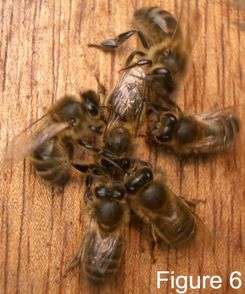
Guards, a subset of workers that are stationed at the hive entrance, discriminate between nestmates and intruders, both conspecific and allospecific, and must respond to changing conditions. For example, when nectar is scarce, honey bees are more likely to rob their neighbors of food stores, and guards become more discriminating. In Figure 6, 5 guards surround a conspecific intruder who is trying to gain entrance to the hive. They determine that she does not below by comparing her odor to their colony's odor.
For my Ph.D. at the University of Sheffield with Professor Francis Ratnieks, I investigated guarding and recognition as an adaptive response to changing threats from intrusion. This work also included several trips to Brazil, which allowed me to do comparative studies using stingless bees.
For my Ph.D. at the University of Sheffield with Professor Francis Ratnieks, I investigated guarding and recognition as an adaptive response to changing threats from intrusion. This work also included several trips to Brazil, which allowed me to do comparative studies using stingless bees.
3. The hows and whys of bumble bee worker size variation
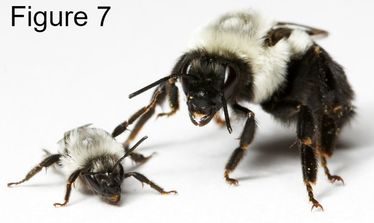
Social insects display task-related division of labor. In some species, division of labor is related to differences in body size, and worker caste members display morphological adaptations suited for particular tasks. Bumble-bee workers (Bombus spp.) can vary in mass by eight- to tenfold (Figure 7) within a single colony, which previous work has linked to division of labor. However, little is known about the proximate mechanism behind the production of this wide range of size variation within the worker caste. This was the research topic of my postdoctoral fellowship with Professor Anna Dornhaus at the University of Arizona. Photo by Alex Wild @ alexanderwild.com.
4. The effects of secondary compounds on honey bee foraging behavior
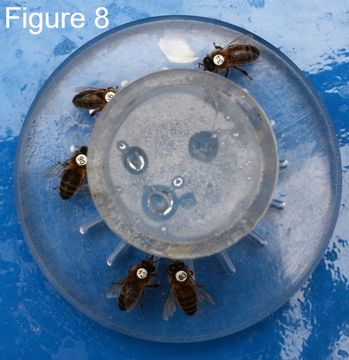
In pollination, plants provide food reward to pollinators who in turn enhance plant reproduction by transferring pollen, making the relationship largely cooperative; however, because the interests of plants and pollinators do not always align, there exists the potential for conflict, where it may benefit both to cheat the other. Plants may even resort to chemistry: caffeine, a naturally occurring, bitter-tasting, pharmacologically active secondary compound whose main purpose is to detract herbivores, is also found in lower concentrations in the nectar of some plants; however, the ecological significance of caffeinated nectar remains unknown. We found that caffeine generates significant individual- and colony-level effects in free-flying worker honeybees. Overall, caffeine causes bees to overestimate forage quality, tempting the colony into sub-optimal foraging strategies, which makes the relationship between pollinator and plant less mutualistic and more exploitative. Photo by Roger Schürch.
5. Learning and memory in different subspecies of honey bees
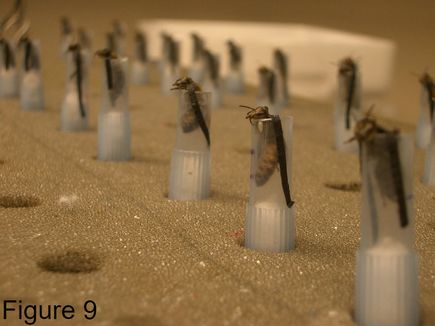
es cognitive ability correlate with a positive fitness consequence? Previous research in both vertebrates and invertebrates provides mixed results. Here, we compare the learning and memory abilities of Africanized honeybees (Apis mellifera scutellata hybrid) and European honeybees (Apis mellifera ligustica). The range of the Africanized honeybee continues to expand, superseding the European honeybee, which led us to hypothesize that they might possess greater cognitive capabilities as revealed by a classical conditioning assay. Surprisingly, we found that fewer Africanized honeybees learn to associate an odor with a reward and remembered the association a day later. While Africanized honeybees are replacing European honeybees, our results show that they do so despite displaying a relatively poorer performance on an associative learning paradigm. This was research I performed in collaboration with Professor Wulfila Gronenberg at the University of Arizona and Dr. Gloria DeGrandi-Hoffman at the Carl Hayden USDA Bee Lab in Tucson.
